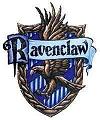“Join in black December’s sadness, lie in August’s welcome corn, stir the cup that’s ever blending with the blood of all that’s born . . .”
-- Jethro Tull, Cup of Wonder, from Songs from the Wood
Pesach took me by surprise and then there was a long silence on this blog. So many things happened in April and May and then summer was upon us, and now the Monsoon and the first hints of autumn are already showing themselves here in the high country. Elul is also upon us, early this year just as Pesach was. But in order to begin looking to the year ahead, I need to look back at least a bit to see what brought me from there to here.
April, Come She Will:

In April, I:
- Edited a dissertation for my Ruby Slipper friend, doing both APA Style formatting, grammar and spelling, and helping with writing style.
- Worked on a literature review for a class I was taking, as well as a research proposal and presentation.
- Enjoyed down time hanging out at Barnes and Noble in Albuquerque, and began planning the summer work at the ranch.
The term ended for the Cowboy and I at the end of April, and he returned to the ranch and stayed. However, I was still back and forth there, and on up to Aurora, Colorado, mostly on Libertarian Business.
In May, I:
- Helped plan and attended the LPNM annual convention, where I was termed out as Vice Chair and began a term as Secretary. There was a lot of politicking involved this time as we had a take-over threat and I really wanted our current Chair to remain Chair, although he wasn’t so sure.
- Continued final editing on the Ruby Slipper’s dissertation, which reported a kick-ass study he did.
- Drove up to Aurora one weekend for the Libertarian State Leadership Alliance meeting, held in conjunction with the Colorado State Convention. This was great—more relaxed than the bi-annual National Convention—there was plenty of time to talk to Libertarians. It always feels like coming home!
- With the pressures of committee and comps preparation over for the semester, I had a chance to spend time with Excel Manufacturing friends after a long hiatus.
- At the ranch, we welcomed our only baby calf of the spring (we had shipped some of the older cows and the bull earlier in the year). We also had water-pipe problems and had to work on the system, and install a new French drain in the irrigation system as well. We got the fencing complete for the greenhouse/garden area.
June is the Hottest Month:

In June:
- I picked up my nephew, the Illinois Boy, at the airport as his parents moved to Texas and he came to try out life at the ranch. Once he adjusted to the altitude, he took to it very well.
- The day I picked up the IB, I had a long talk with my realtor, and we brought the price down for the Sedillo house, my beautiful Hobbit Hole. It was a painful decision, but important. We knew we needed to sell the house.
- On the second Friday in June, I thought I saw lightning as I was setting the Shabbat table. Dry lightning is common in June, so I thought nothing of it. The next morning, I woke up with a floater in my eye. I called Eye-Doc Randi that afternoon, and the short of it is that I had a vitreous detachment, requiring numerous trips to Albuquerque and UNM Eye Clinic for monitoring.
- We started fencing for a new horse pasture, and the Cowboy was really happy to have the IB’s help. The IB also learned to ride a horse, drive cattle and drive the tractor. We will make a cowboy of him yet!
- I went riding every week with a friend, JL, another Jew in the Republic of Catron. She was a wrangler for years in Arizona, and passed on some of her riding expertise to me.
- The Cowboy broke his hand while driving cows, and spent five weeks in a cast. Or he was supposed to, anyway!
July was truly a wonderful month, because the Monsoon came right on the Glorious Fourth and stayed through the month. We got 3.53 inches of precipitation for the month, several of them in cloudbursts that re-arranged the landscape.
In July:
- We celebrated the Glorious 4th small-town style, with a parade and BBQ. Yours truly was honored to read the Declaration of Independence right after the choral presentation of patriotic music.
- The IB settled in, helping me dig retention basins around the trees, and we started a garden.
- The Cowboy spend several weeks working cattle at the York Ranch, but that ended in mid-July because the Monsoon had not yet hit the Continental Divide Country, and they shipped their cattle to a ranch in Texas for better grass.
- I qualified for my Concealed Carry Weapon license, shooting the EG’s Glock .40!
- The Cowboy removed his cast prematurely at the York Ranch, cutting it off himself, because it was getting gnarly. He’s definitely a Cowboy.
- The IB had to return to Illinois to take care of some business late in July and we weren’t sure if he was coming back.
- In the same week, Eye-Doc Randi found a small tear in the retina of my right eye—the one with the vitreous detachment—and I had a week in Albuquerque, playing appointment tag with an over-worked retina specialist.
- In the same week, the IB decided to come back—with resome gentle pushing and bribery from his mother and grandparents, and I arranged the flight.
- In the same week, we had a real gully-washer and frog-strangler, that washed away half the county. We have a new micro-topography here at the Ranch.
Lie in August’s Welcome Corn:

The country looks like spring does elsewhere, all green and gold with water falling from the sky, running, trickling and making mud for the dogs to play in and trucks to get stuck in. The IB, gone barely two weeks, did not recognize the place.
And the day I picked him up at the airport, we got an offer on the house. Monday, that was. We dickered Monday evening to Tuesday afternoon. We came to agreement just after I had a good interview for a part-time staff position at CNM, a position I applied for in the Disability Center.
Whoo-hoo! The house is under contract. And, sniffle, we must now say good-bye to that era in our lives.
And just in time for Elul—the season of our turning . . .
But that’s another blog.





































































